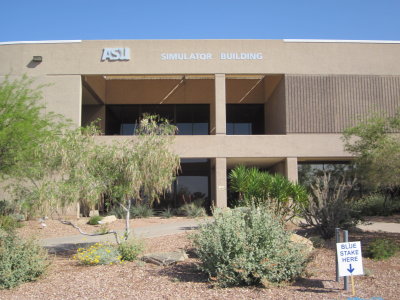
IMG_3890.JPGASU's simulator building located at the Phoenix Mesa Gateway airport- www.phxmesagateway.org/ Formerly Williams AFB until it closed in 1993, The building was part of the former base and was built for training functions. |

IMG_3891.JPGThree different stations for training future air traffic controllers. |
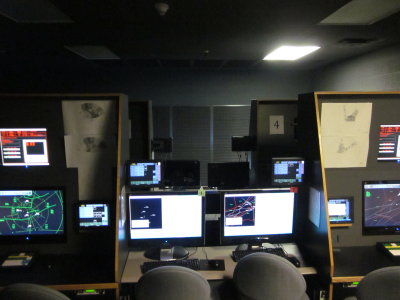
IMG_3892.JPG |

IMG_3893.JPG |

IMG_3894.JPG |

IMG_3895.JPG |

IMG_3896.JPG |

IMG_3897.JPG |

IMG_3899.JPG |

IMG_3900.JPGThis one can simulate the views as seen by the tower, the pilot, a point outside the plane, etc. It runs on about a dozen PCs. |

IMG_3902.JPGSome of the wall displays in the hallways. |

IMG_3903.JPG |
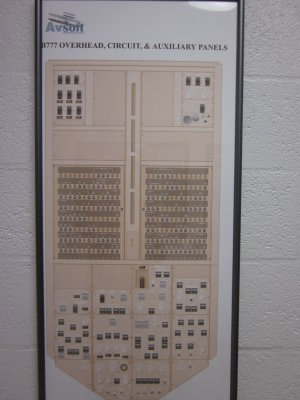
IMG_3904.JPG |
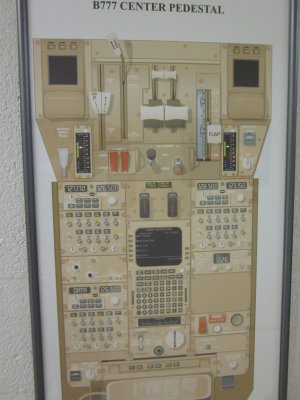
IMG_3905.JPG |
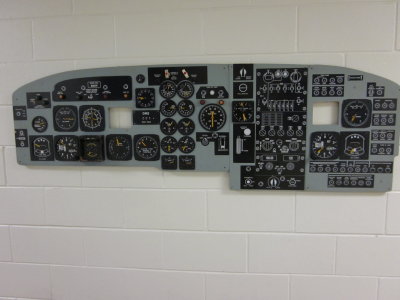
IMG_3916.JPG |
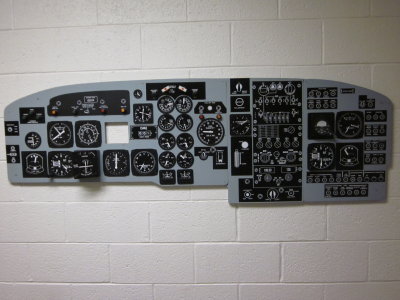
IMG_3907.JPG |
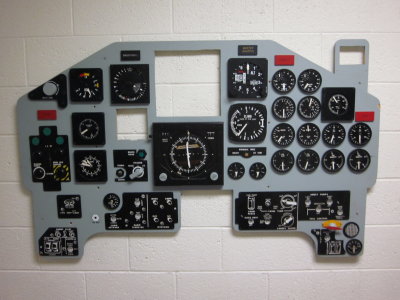
IMG_3908.JPG |
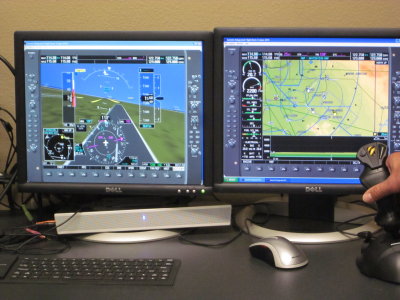
IMG_3906.JPGThis one they said uses some off-the-shelf Garmin software to provide the simulation. |
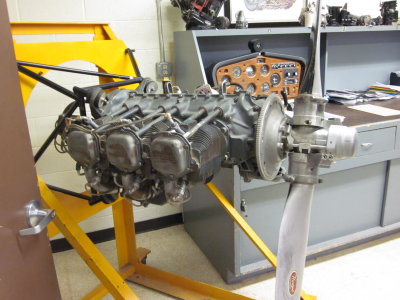
IMG_3909.JPGA classroom full of aircraft engines, piston and jet types. |
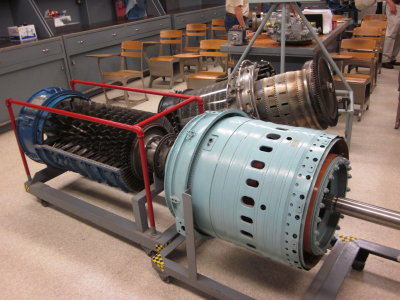
IMG_3910.JPG |
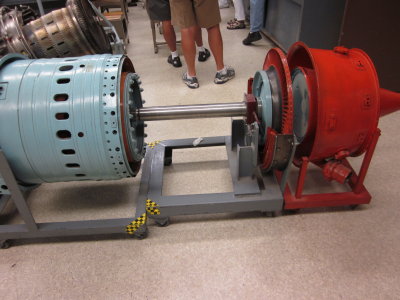
IMG_3911.JPG |
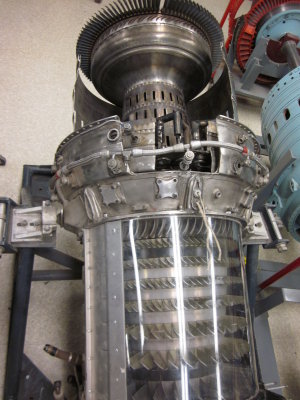
IMG_3912.JPG |
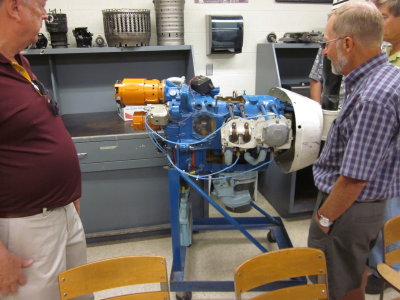
IMG_3913.JPG |
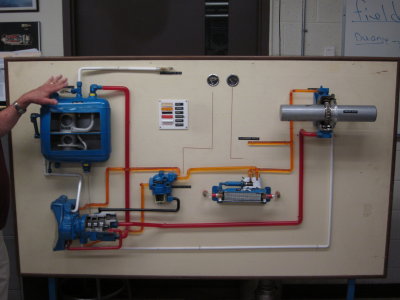
IMG_3914.JPGDisplay of some aircraft system components. |
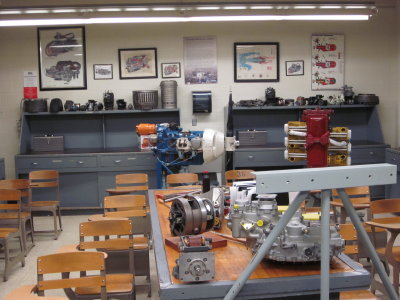
IMG_3915.JPG |

IMG_3917.JPGAnother room with even more aircraft powwer plants. |
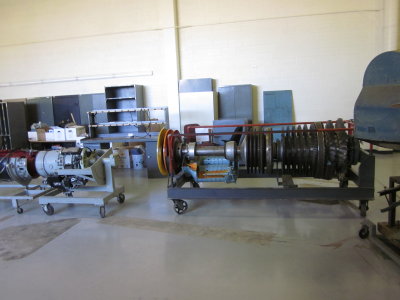
IMG_3918.JPG |

IMG_3919.JPGThis display shows how a de-icing system works. The wing leading edge (vertical object at far left) has a black 'rubber' covering. When pressurized, it expands and breaks up the accumulated ice coating. |
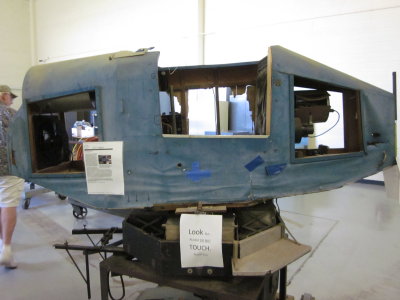
IMG_3920.JPGOne of the well-known Link trainers. Invented in the 1930s and widely used for pilot training during WW2. It doesn't look in real good shape. |

IMG_3921.JPGIf you can't read it, here is the URL for the same sheet.
http://www.nationalmuseum.af.mil/factsheets/factsheet_print.asp?fsID=3371 |
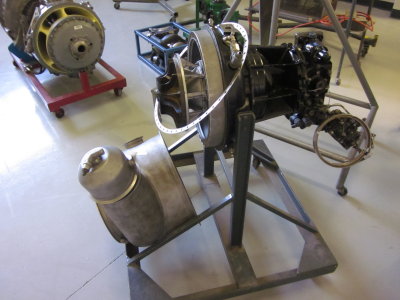
IMG_3922.JPGI remember this was an Auxiliary Power Unit (APU); obviously from a larger plane. |
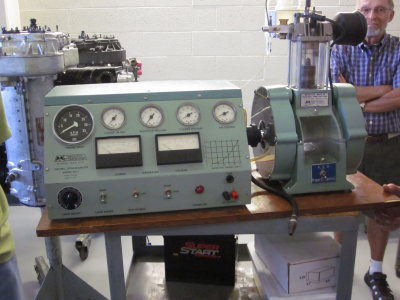
IMG_3923.JPGThis is clever. A single cylinder gasoline engine with a glass/plastic transparent cylinder. |
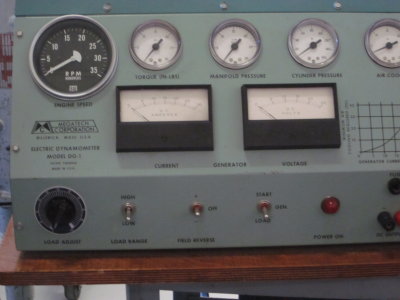
IMG_3924.JPGThe fuel and air mixture can be adjusted and the effect on the flame color, and engine parameter can be observed. They started it up and got it up to 1500 rpm. |

IMG_3925.JPG |
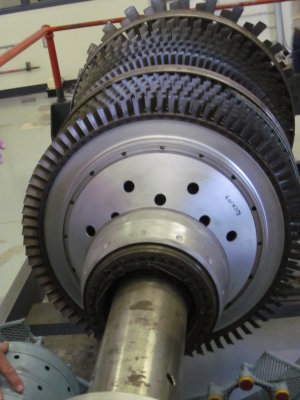
IMG_3926.JPG |

IMG_3927.JPGThe yellow portion shows how the jet fuel is introduced, mixed with the compressed air and ignited. This design isn't used any more. |
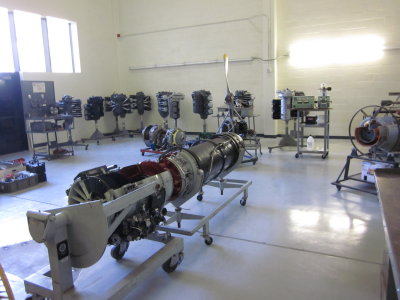
IMG_3928.JPG |
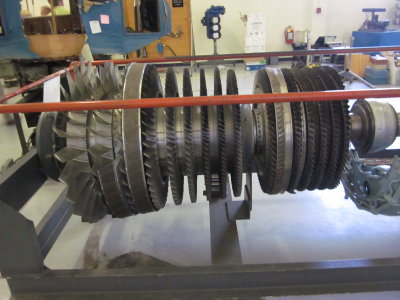
IMG_3929.JPG |

IMG_3930.JPGAnother simulator wiht a cockpit mockup and more complete instrument panel. |

IMG_3931.JPG |

IMG_3932.JPGWe got a demonstation of a takeoff, flight to Las Vegas where they buzzed the strip and almost hit a building. I don't know how well it simulates a crash. Reminds me of landing in San Diego. |

IMG_3933.JPG |

IMG_3934.JPGAnother simulator version; this one has the 'stick' and floor rudder pedals. |

IMG_3935.JPGI noticed this taped on one of the walls. The North American F-86 Sabre Jet was in use in the 1950s. |

IMG_3936.JPG |

IMG_3937.JPGKind of a mini wind tunnel to demonstrate the venturi effect and how a wing works. |

IMG_3938.JPG |

IMG_3939.JPGThis display demonstrates an aircraft hydraulic system. |

IMG_3940.JPGOn our way over to the ATP hanger, we passed this building. No connection with the flight training programs. At least not intentionally. |

IMG_3941.JPGFormer jet on display at the airport. I believe it is a Northrop T-38A-15-NO "Talon" trainer. |
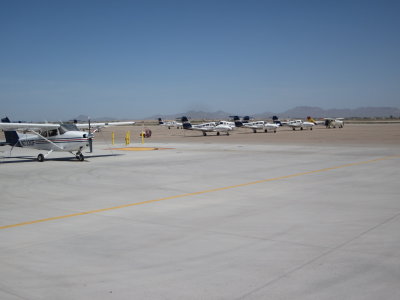
IMG_3943.JPGPhotos of some of the planes parked here. |
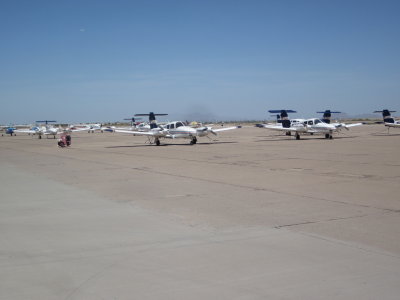
IMG_3944.JPG |

IMG_3945.JPGThis plane belonged to the University hence the tail design. Not flown very often but maintained very well by the students. |
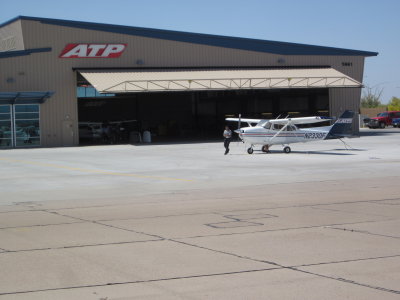
IMG_3946.JPGATP is a commercial aircraft training company which we also visited. |

IMG_3947.JPG |

IMG_3948.JPGPlane undergoing maintenance at the ATP building. For engine maintenance (not performed here) about 4 bolts can be removed and engine swapped out. Note the freckled appearance of the cowling which is caused by former insects. |
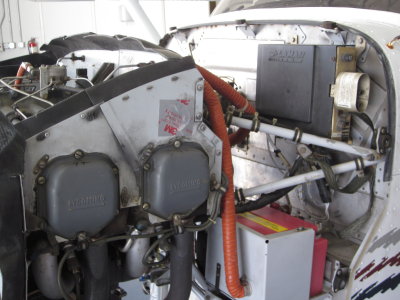
IMG_3949.JPG |

IMG_3950.JPGPerhaps the mother of all ceiling fans installed in this hanger. Despite it's impressive size, we heard the comment that 'it doesn't turn fast enough' After all this is Arizona and a cool building is desirable. |

IMG_3951.JPGSome evaporative 'swamp cooler' equipment complements the big fan. |











